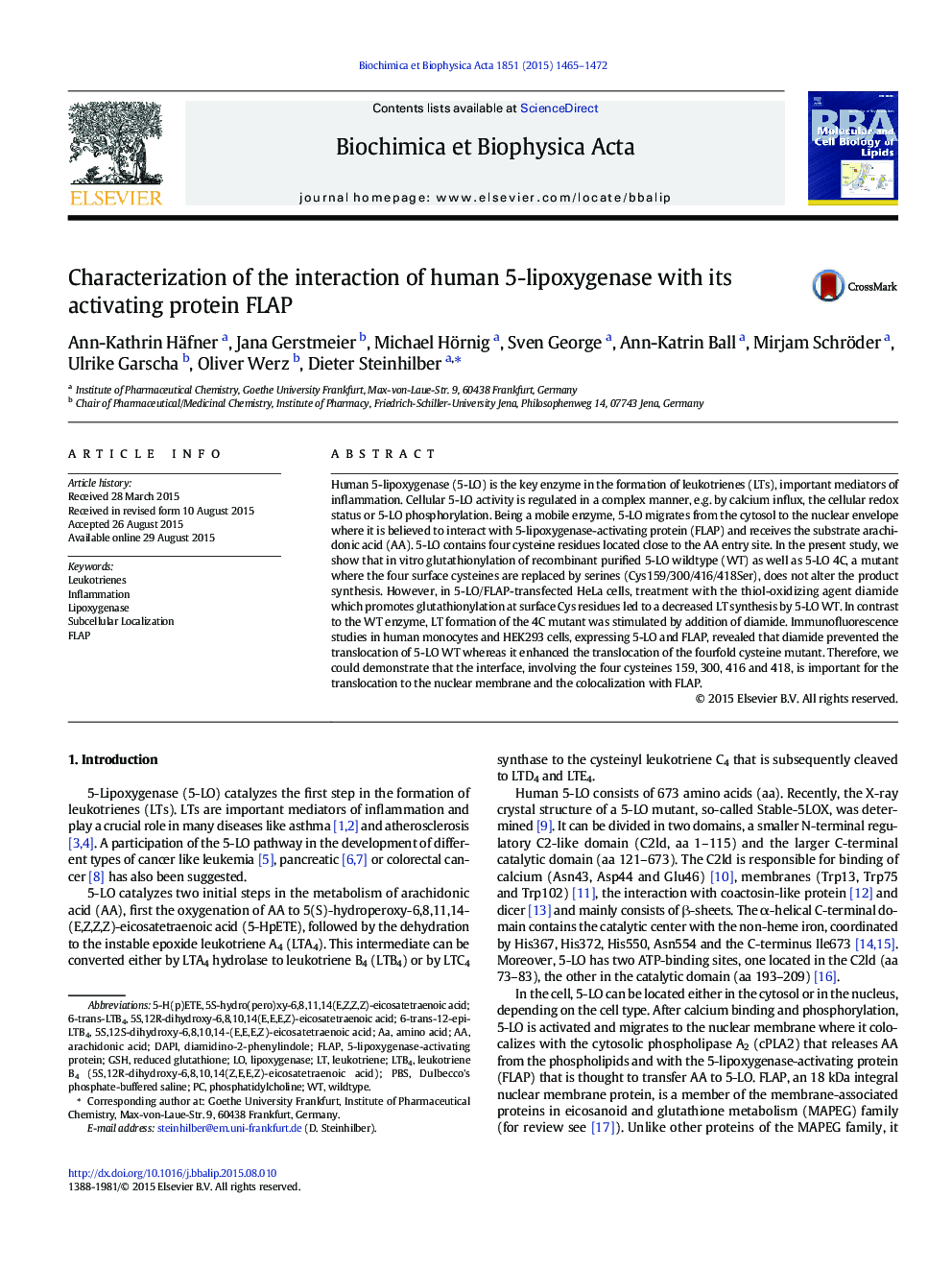| Article ID | Journal | Published Year | Pages | File Type |
|---|---|---|---|---|
| 8301803 | Biochimica et Biophysica Acta (BBA) - Molecular and Cell Biology of Lipids | 2015 | 8 Pages |
Abstract
Human 5-lipoxygenase (5-LO) is the key enzyme in the formation of leukotrienes (LTs), important mediators of inflammation. Cellular 5-LO activity is regulated in a complex manner, e.g. by calcium influx, the cellular redox status or 5-LO phosphorylation. Being a mobile enzyme, 5-LO migrates from the cytosol to the nuclear envelope where it is believed to interact with 5-lipoxygenase-activating protein (FLAP) and receives the substrate arachidonic acid (AA). 5-LO contains four cysteine residues located close to the AA entry site. In the present study, we show that in vitro glutathionylation of recombinant purified 5-LO wildtype (WT) as well as 5-LO 4C, a mutant where the four surface cysteines are replaced by serines (Cys159/300/416/418Ser), does not alter the product synthesis. However, in 5-LO/FLAP-transfected HeLa cells, treatment with the thiol-oxidizing agent diamide which promotes glutathionylation at surface Cys residues led to a decreased LT synthesis by 5-LO WT. In contrast to the WT enzyme, LT formation of the 4C mutant was stimulated by addition of diamide. Immunofluorescence studies in human monocytes and HEK293 cells, expressing 5-LO and FLAP, revealed that diamide prevented the translocation of 5-LO WT whereas it enhanced the translocation of the fourfold cysteine mutant. Therefore, we could demonstrate that the interface, involving the four cysteines 159, 300, 416 and 418, is important for the translocation to the nuclear membrane and the colocalization with FLAP.
Keywords
Related Topics
Life Sciences
Biochemistry, Genetics and Molecular Biology
Biochemistry
Authors
Ann-Kathrin Häfner, Jana Gerstmeier, Michael Hörnig, Sven George, Ann-Katrin Ball, Mirjam Schröder, Ulrike Garscha, Oliver Werz, Dieter Steinhilber,
